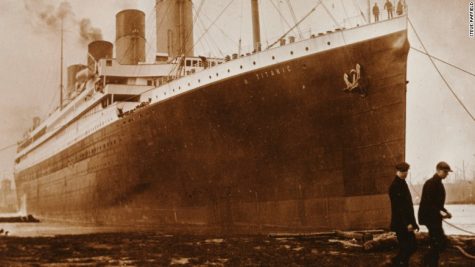Titanic: Rethinking its Fate a Century Later
Over a century after the notorious sinking of the H.M.S. Titanic, researchers are still debating the real cause of the Titanic’s fate. The general public associates the sinking of the “unsinkable ship” with the romance-disaster movie written by James Cameron, one of the most successful movies in American entertainment history. The movie, along with written accounts and scientific evidence, seem to indicate that an iceberg struck the hull of the ship, causing it to sink hours later. Though surprising that an iceberg field would be present in the North Atlantic Ocean during April, reports and iceberg movements prove a likely possibility of an ice field in the approximate area. 85% of all Atlantic icebergs stem from Greenland’s west coast, an ice shelf with definitive break-ups in the early 20th century. Thus, the possibility of the Titanic sinking from an iceberg collision is likely, supported by scientific data and passenger accounts. There are, however, recent studies that question the Titanic’s true demise. Considering that it took 70 years for advanced studies to take place, there are definite concerns of whether the previous “investigation” (1912) produced accurate results. The immediate blame from officials and experts at the time was forced upon the captain, who headed through the ice field at a dangerously quick speed. It is very possible that the “investigators” ignored other possible causes, in order to close the case in an assured manner. Now, over a century later, there is new evidence supporting other claims, igniting new discussions worldwide.
A new photo (below), privately owned by an anonymous individual, has added to a theory of a coal fire onboard the ship. Bought at an auction in 2012, this photo taken in Belfast (the final port before crossing the Atlantic) has changed public belief of the Titanic’s fate. It depicts a black streak along the hull in the photograph, indicating excessive heat in the coal bunker before the ship even left port. That spot happens to be the very exact spot of the iceberg collision, thus fueling the new theory. Temperatures of around 1000 degrees could easily warp even the thickest steel, making it brittle. Whether this was a major cause of the Titanic sinking or if there was a subtle connection between the iceberg and the fire, researchers feel confident that a fire definitely was evident at some point during the last few hours. The theory sounds believable, but you may be wondering… why did it speed up towards the ice field if it was catching fire? Scientists and marine engineers have an answer, saying that workers in the boiler room may have reacted to the fire by heaving the coal into the furnaces of the ship, increasing the speed. Of course, there are a multitude of theories, ranging from reasonable ones like this to others such as that the ship was intentionally sunk in an attempt to kill the countless business moguls onboard the luxury ocean liner. Yet there is no decisive conclusion, causing a great debate among professionals. Senan Molony, journalist and creator of a documentary involving the coal fire, is confident in its impact on the Titanic’s catastrophic sinking. Moderate perspectives include David Hill, former secretary of the British Titanic Society, who believes there definitely was a fire, but it had little influence on the outcome. William Garzke, leader of forensics in the Society of Naval Architects and Marine Engineers, says that “we know now there was nothing wrong with the steel.” These conflicting opinions have increased awareness of the Titanic, and researchers are constantly looking for new leads in the ongoing investigation.










